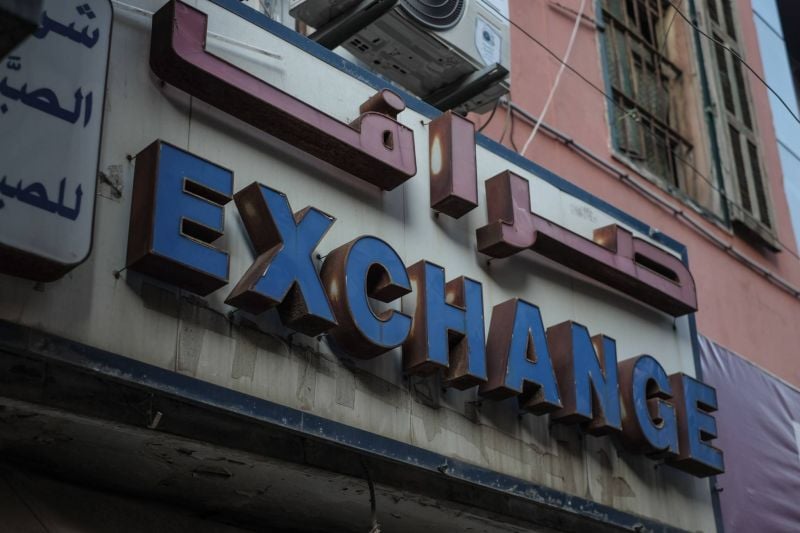
An exchange shop in Beirut. (Credit: João Sousa/L'Orient Today/File photo)
Lebanon’s central bank (BDL) has changed the exchange rate on its Sayrafa platform from 85,500 LL to 89,500 Lebanese liras to the US dollar.
Banks have been notified of the decision and must apply to convert and pay salaries in dollars to government employees initially paid in Lebanese lira.
This marks the first time the Sayrafa rate, which is unilaterally modified by the BDL, has aligned with the market rate, since the platform's launch in 2020.
The market rate hovered around 89,500 LL on Monday evening, according to informal platforms like lirarate.org and Adde Dollar, which relay information provided by exchange agents.
This change in the Sayrafa rate was confirmed to L'Orient-Le Jour by sources within four major Lebanese banks who requested anonymity because they are not authorized to speak to the press. The BDL itself did not immediately comment on the matter on Monday and confirmed the information on Tuesday morning.
Aligning the Sayrafa rate with the market rate, which has remained surprisingly stable for the past three months, is significant.
Since September 2022, Lebanese authorities and the BDL have announced and implemented several measures aimed at controlling the market rate and eliminating intermediary rates created after 2019 under former central bank governor Riad Salameh.
Fears of tax repercussions
These measures specifically included rates lower than the market rate, imposed on depositors wishing to withdraw their money in dollars from banks, which they could no longer do freely. The country's banks, short of foreign currency liquidity, began limiting their clients' access to their accounts since the end of summer 2019, with the blessing of the Association of Banks in Lebanon (ABL) but without authorization from the BDL or a law on capital controls.
BDL intervened by distinguishing between funds in cash or transferred from abroad (which were to be provided or exchanged at their market value) and "bank" funds, or dollars that banks were allowed to release by imposing a discount. At the request of the International Monetary Fund (IMF), with whom Lebanon has been in contact since 2020 for a solution to the crisis, these rates are intended to disappear, just like the official rate, which had long been fixed at 1,507.5 LL before being raised to 15,000 LL on Feb. 1. This latter rate is still used by Lebanon’s tax administration, although some taxes and levies have started to align with the market rate. The Sayrafa rate itself was only used for converting government employees' salaries into dollars, a measure aimed at partly compensating for the fact that these salaries have not been adjusted enough over the past four years to offset the lira's collapse.
The next planned step is the launch of a Bloomberg-operated exchange platform that will become the sole reference for the value of the Lebanese lira. The project was initiated with Wassim Manssouri assuming the helm of the BDL as interim governor on July 31, as leaders failed to appoint a successor to Riad Salameh in time.
This article was originally published in French in L'Orient-Le Jour.